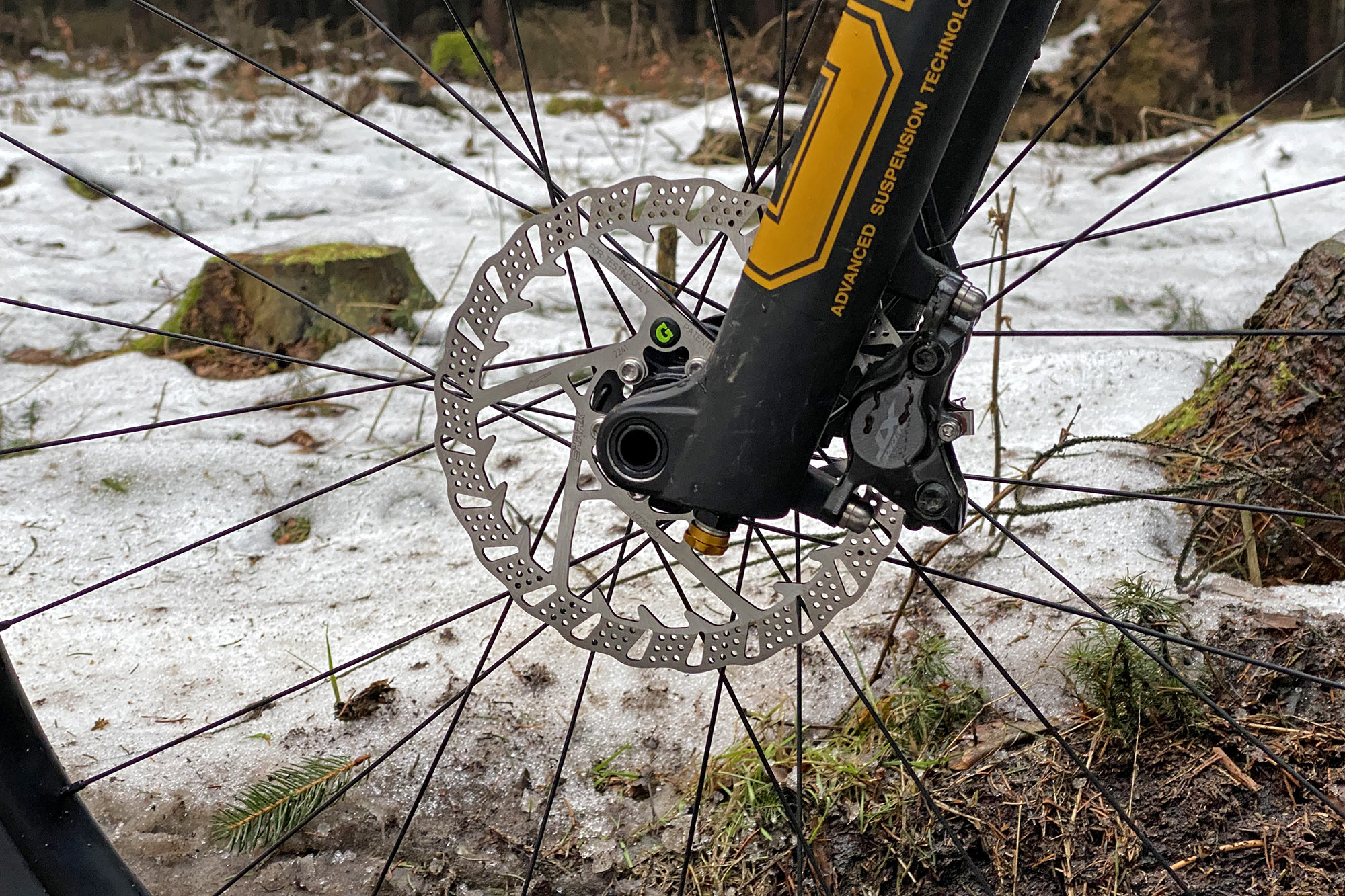New 160mm XC Galfer Shark disc brake rotors bring gravity-inspired brake performance down to shorter travel bikes, too. With the same design featuring heat-dissipating fins, the new smaller-diameter (and thinner) Shark rotors promise more consistent brake performance for cross-country, marathon, and downcountry bikes now, as well as potential weight savings. We’ve dropped a few grams off one of our light trail bikes this winter, without any loss of braking performance…
Galfer Shark 160mm, lightweight 1.8mm disc brake rotors
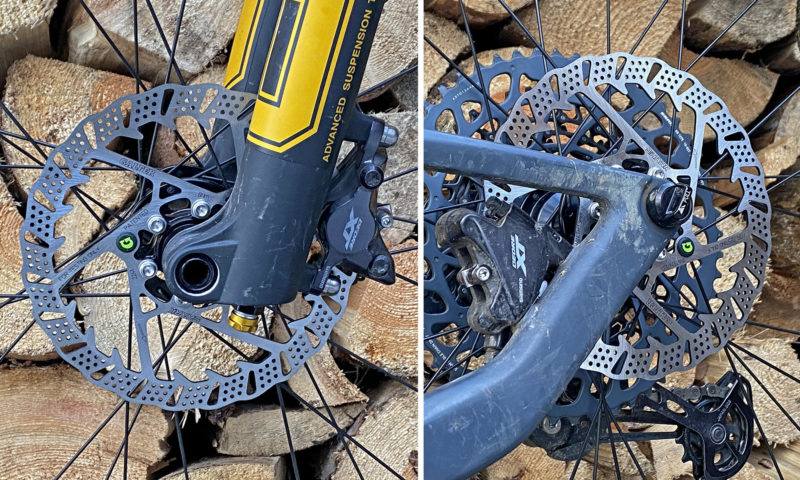
Last year, Spanish brake maker Galfer introduced their Shark disc brake rotors to reduce brake temperature and reduce brake fade for DH & Enduro racers – in 180, 203 & 223mm diameters x 2.0mm thick. But now a lighter, smaller diameter 160mm version brings that performance boost to XC & Downcountry riders, too.
Tech details
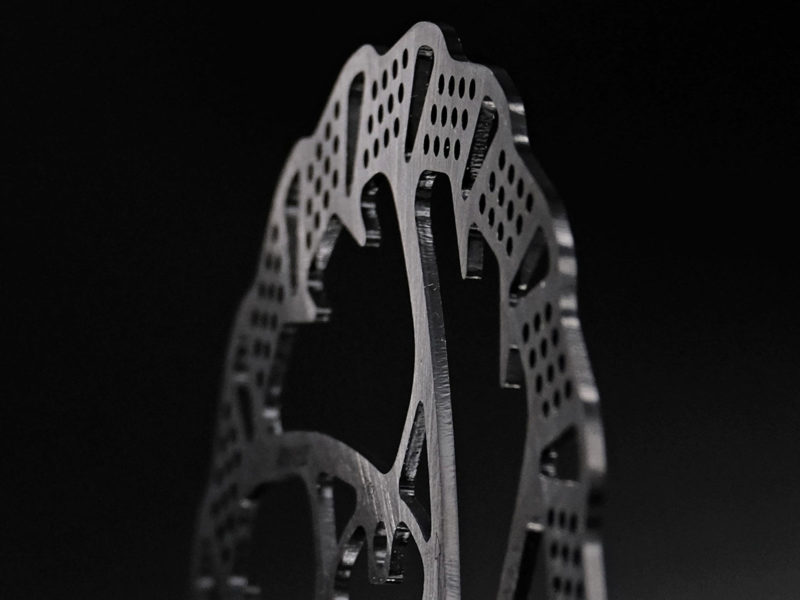
The XC rotors feature the exact same layout, with small round perforations in the braking surface to add more area for heat dissipation, big cutouts in the braking surface & an outer wave shape to clear debris, and the inward-facing Shark fins for even more heat dissipation. The rotors are cut from high-carbon stainless steel in Spain, just now in the thinner 1.8mm thickness appropriate for lightweight mountain bike brake calipers.
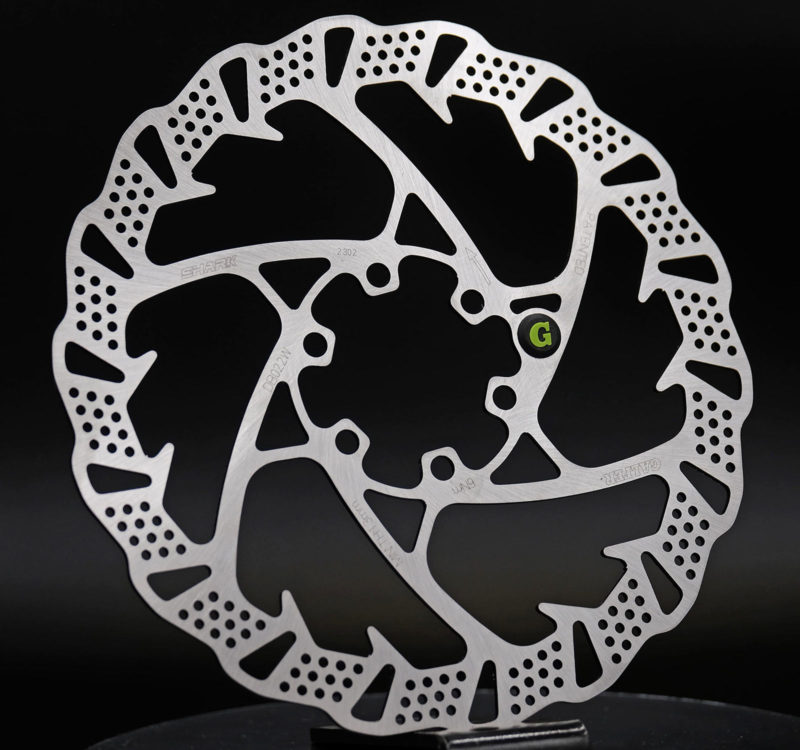
They are also still only available as 6-bolt, a bit of an obstacle as many lighter XC & downcountry bikes have moved to the lighter centerlock hub standard. But Galfer does also sell alloy centerlock adapters.
Galfer claims a weight of just 104g per rotor, although our test rotors both weighed in a tad heavier at 106g a piece.
Braking Performance: Downsize without sacrificing braking
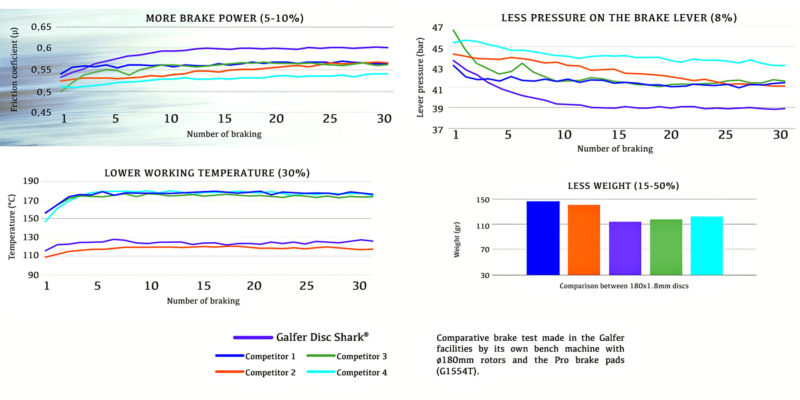
Galfer sold us on the idea of the new 160mm rotors, as offering better performance compared to other 160mm rotors. Together with their brake pads, Galfer says their Shark rotors deliver higher friction for 5-10% more brake power, an 8% reduction in pressure required at the brake lever to get max power, and a 30% reduction in rotor temperature (vs. all but one competitor… wonder which one?). Curiously, all of those performance upgrades are comparing a 1.8mm thick 180mm Shark rotor against other 1.8x180mm rotors – but for now the 1.8mm Shark rotor is only available in 160mm. Current 180mm Shark rotors are 2mm thick for heavier, longer-travel brakes.
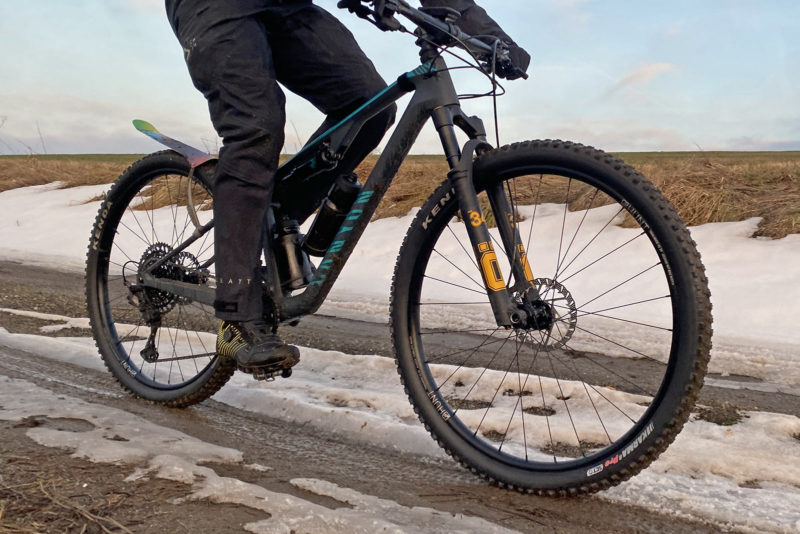
In any case, Galfer convinced me to swap the Shimano XT 180/160mm rotor combination out on my Canyon Lux Trail, for a lighter 160/160mm Shark rotor setup.
How much weight did I save?
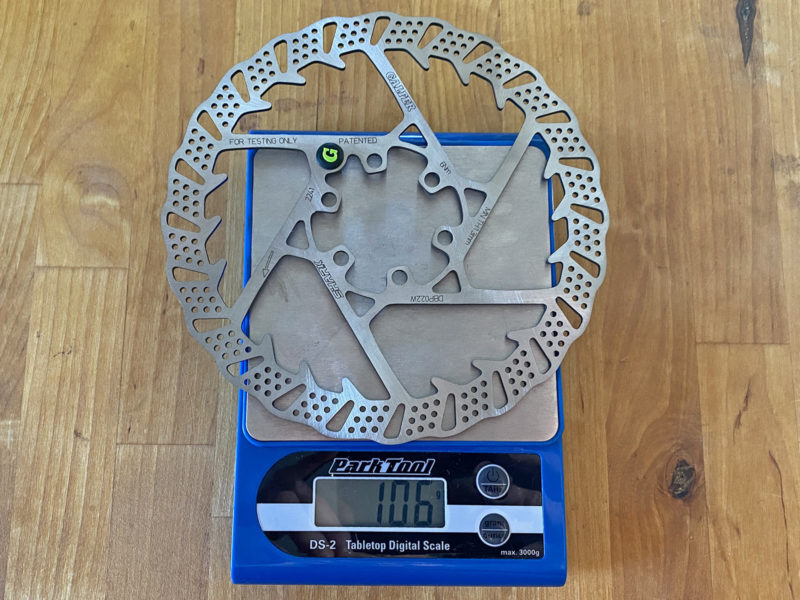
On moving to 160mm rotors alone – a 126g 180mm XT front & 114g 160mm XT rear – I saved 28g. Interestingly, swapping in the 10g (f) & 19g (r) Shimano pads I realized that my bike had an aluminum-backed set of pads in the post-mount front brake and steel-backed pads in the flat-mount rear brake – both 2-piston XT.
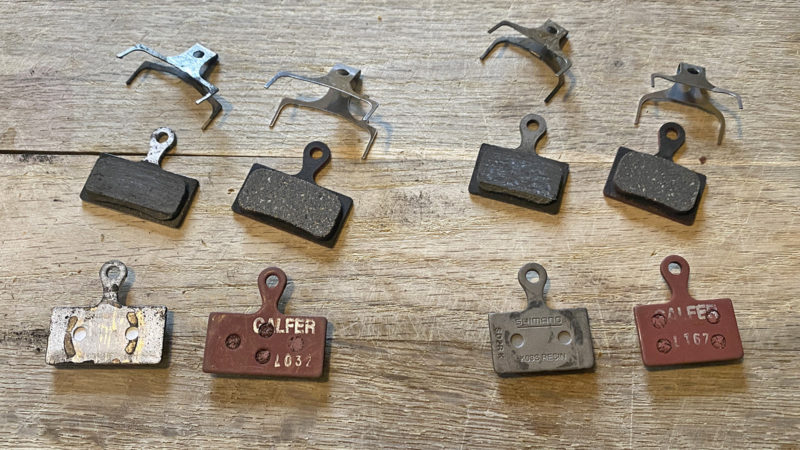
So switching to red steel-backed Galfer pads (19g f/15g r) actually added 8g to my setup. I did lose a 12g 160-180mm adapter on the fork, and dropped another 7g with shorter bolts that were needed. So in the end, I had a net reduction of 39g. That’s not nothing, but not a huge savings.
The downside here would probably be if you only have centerlock wheels. My lightest wheelset for the Lux Trail is centerlock, and putting these rotors on them would mean adding an extra 32g per wheel, obviously erasing all the savings and more. Curiously, the weight differences between XT rotors I have for 6-bolt & centerlock are negligible. Instead, I put the Galfer Shark rotors on a set of alloy Hunt Trail Wide wheels I ride on the bike with meatier tread for looser conditions.
So was it worth it?
First Impressions – Riding Galfer Shark XC 160mm rotors

After a proper bed-in of the brakes on dry pavement with hillclimb internals, I headed out to hit the trail to test out the new brake setup. With a break in winter conditions, I did at least get to test the new Shark rotors out on dirt (mud?) peeking out of the snow – proper Leatt Mono Suit conditions. But I can’t really say much about heat build-up just yet.

Brake bite and power definitely feel good, though. The new rotors delivered confident braking performance, and with Galfer pads predictable modulation, over a mix of damp to wet conditions. No noticeable reduction in power, even with the downsized front rotor. The feel of the brakes at the lever also does feel good, although I can’t quantify if it is indeed less than my stock XT brakes. The front brake especially is squealing a bit under hard braking, but pretty much every setup does that when I ride it through muddy bogs covered with ice & snow.
Do the smaller, lighter Galfer Shark XC rotors brake better than the Shimano XT setup?
I honestly can’t really tell the difference so far. And that’s a pretty good thing. I had no complaints with the XT rotors & pads, and so far the lighter Galfer setup seems to work just as well.
Galfer Shark XC – Pricing, availability & options
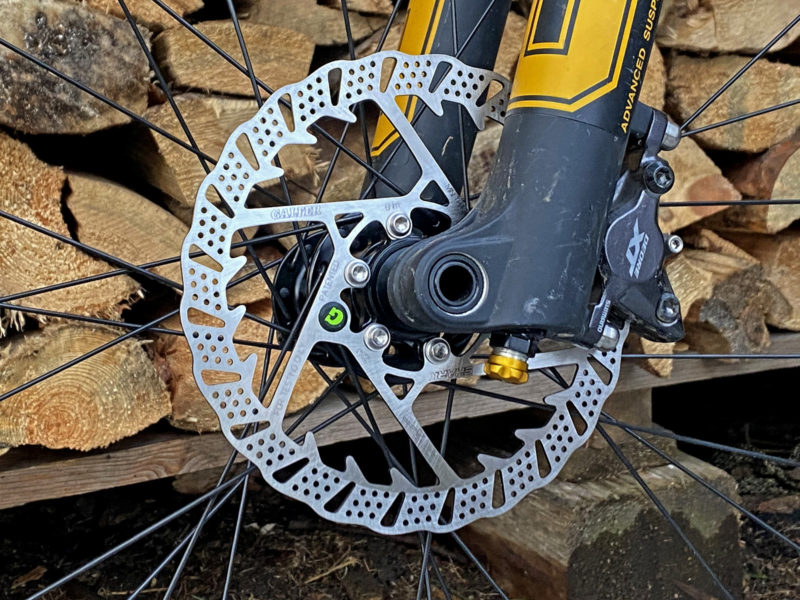
The new smaller, thinner Galfer Shark XC rotors are currently available in only one size, targeted at XC & Marathon bikes, or even Downcountry & lightweight Trail builds – 160mm diameter x 1.8mm thick. The rotors are made in Europe and retail for 90€, including VAT.
Presumably, a future 1.8mm thick version in 180mm diameter might be available. But for now, you either need to downsize to 160mm front & rear, or check to see if the thicker gravity-oriented 2mm rotor will fit in your front brake caliper.

I had initially thought I would swap in one of the thicker 180mm rotors on this light trail bike. But for now with no noticeable reduction in braking power, I’ll keep the smaller Shark rotors on the Lux Trail and see how they handle heat and more sustained braking once the trails dry and the weather warms up.
